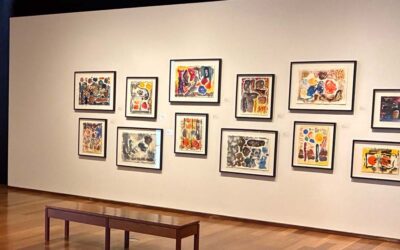Part 1: How Much Will Museum Digital Projects Cost Me?

Rachael Cristine Woody
It’s important to note that project costs are dictated by multiple factors. As you begin your own digital project work, please include a step in the process to research costs and request quotes.
For museum digital projects, the cost areas to consider are the following:
- Digitization Equipment
- Digitization Software
- Collections Management Systems (CMS)
- Digital Asset Management Systems (DAMS)
- Training, Workshops, Certificates, or Classes
- Contractors, Vendors, Consultants
In each area I’ll outline the options available and provide the cost range that exists for each. There are a lot of digitization equipment options, so this post will focus solely on digitization equipment and software.
1. Digitization Equipment
Digitization equipment is dictated by the type of item to be digitized. For most items there are budget-friendly options available that may be a good choice if both the budget and the project size are modest. When it comes to digitization equipment, I’ve found the more expensive equipment can provide higher quality digital files and save a substantial amount of staff time. This is possible because the higher-end equipment can scan or image items faster and/or have automated mechanisms built in. Keep this in mind as you balance cost of equipment with staff time, multiplied by how many items are expected to be digitized over the course of the project.
Objects: Digitization of 3D objects are fairly typical for a museum setting, and the traditional method of creating a digital surrogate for a 3D object was still photography. However, we now also have access to photogrammetry, LIDAR scanning, and Reflective Transformation Imaging. Therefore, the equipment can range from a digital camera (even a smartphone), to a laser scanning kit and controllable lighting.
Equipment Cost Range: $300 – $10,000
Note: Image capturing technology is becoming better and more affordable. Even in the museum world we’re seeing that smartphone image quality is just as good as – if not better – than a standard DSLR camera. However, if you’d like to play with the newer technology, it can quickly get into the thousands of dollars range.
Flat Items: Documents, photographs, slides, negatives, etc. are flat items that can be digitized with a flatbed scanner.
Equipment Cost Range: $200 – $5,000
Note: It’s true. Sometimes all you need is a simple scanner. If you’re executing a digitization project, the bigger and better the scanner is, the more control you’ll have over the quality. And bonus, they can usually scan multiple items and at a faster rate. In this case, the amount of time you can save yourself with scanning more than outweighs the initial investment cost.
Bound Items: Bound items require more sophisticated equipment so as to scan the item without damaging it. The equipment required for bound items are overhead scanners, such as: CZUR ET16 or 18 Plus all the way up to Zeutschel Imaging Products.
Equipment Cost Range: $400 – $20,000
Note: Similar to the flatbed scanner, the more digitization you’re performing the more important it is to invest in equipment that can save you time.
Audio and Video Materials: A/V (or multimedia) materials are the most diverse in format type and format evolution, requiring a variety of antique equipment to play to materials in their native format while capturing and transposing them to digital files. With that in mind, a variety of a/v equipment may be needed and can only be bought second-hand; for example: vinyl record player, tape cassette player, film projector, VHS player, and the several dozen similar “tape” media players. Then, regardless of the player equipment, you will also need a USB converter that connects the player equipment to a digital recording device.
Equipment Cost Range: $200 – ???
Note: This category really depends on the equipment you need, how old or rare it is, and what the second-hand market is like at any given point in time.
Part 2…
Read part-two continuation of this series where I outline museum costs for: 2. Digitization Software, 4. Collections Management Systems, and 5. Digital Asset Management System (DAMS).

Rachael Cristine Woody
Expert Rachael Cristine Woody advises on museum strategies, collections management, and grant writing for a wide variety of clients. In addition to several titles published by Lucidea Press, Ms. Woody is a regular contributor to the Think Clearly blog and a popular presenter. Register here for her upcoming webinar, “How Much Will Museum Digital Projects Cost Me?” on November 24, 2021. And learn about Lucidea’s Argus solution for powerful and innovative museum collections management.
Never miss another post. Subscribe today!
Similar Posts
From Preservation to Resilience: An Introduction to Building Resilient Digital Collections
Preserving a digital collection is a job that is never done. But what if we shifted our focus from preservation to building digital resilience?
Client Spotlight: MacLaren Art Centre Goes Beyond Collections Care to Access and Growth
“As our needs evolved, it became clear that our existing CMS was no longer working for us. Not only do we need to perform basic collections care, we need a system that will support public access, enable growth, and match our innovative strategies.”
Museum Collections Online: Digital Storytelling Blog Series Roundup
An overview of 10 blog post series that highlight how museums can leverage online collections and digital storytelling platforms, strategies, tools, and best practices.
How Museums Can Broaden Access and Improve Accessibility with Digital Storytelling
Museum expert Rachael Cristine Woody explains how digital storytelling expands access and improves accessibility of museum collections with inclusive multimedia formats.




Leave a Comment
Comments are reviewed and must adhere to our comments policy.
0 Comments